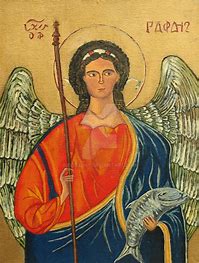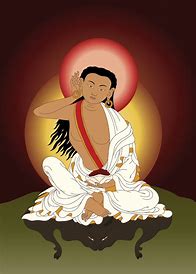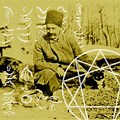










Sacred Mysteries: Skulduggery behind the saints of All Souls
A man always said a prayer when walking through a graveyard on his way home, for the repose of the souls of those buried there. The story is told by John Mirk, an author of popular spiritual works in the 14th century. One day, the man was pursued by murderous enemies. But he paused in the graveyard to say his usual prayer: “And anon all the churchyard rose full of bodyes, each one with an instrument in his hand of his craft, and they drove against the enemy. And he was ever after the more devout in praying for souls.”
This attitude matched the aim of the foundation of All Souls College, Oxford, in the 1430s. At this time of year we remember today those who died for their country. So did All Souls’ founder, Henry Chichele, Archbishop of Canterbury, and the fellows of his new foundation, who were to say a prayer each morning for the souls of Henry V and the English captains and others who had drunk “the cup of bitter death” in the French wars, as well as for all souls of the faithful departed (which included those of the enemy).
© Alamy St John the Baptist flanked by the four Latin Fathers of the Church in Sir Gilbert Scott's reredos - Alamy
So All Souls chapel was of even more importance than usual for an Oxford College. It had a marvellous wall full of statues – 122 in all – as a backdrop or reredos behind the altar where Mass was said for the dead. Naturally this was broken up at the Reformation and the remnants boarded up to make way for religious murals, first a not excellent Last Judgment by Isaac Fuller, which John Evelyn called “too full of nakeds for a Chapell”, then in 1716 a General Resurrection by James Thornhill.
It was a surprise, wrote Montagu Burrows (the strange author of a history of All Souls), to witness one day in 1871 on a workmen’s scaffold for repairs, plaster scraped away to reveal the medieval inscription Surgite mortui venite ad judicium, “Rise, ye dead and come to judgment”. Instead of a bare wall, Burrows realised there were remains of the medieval reredos “a discovery as unexpected as the sculpture of Nineveh”.
The present-day historian S J D Green pours cold water on Burrows’s claim. His is one of the entertaining and informative chapters in The Reredos of All Souls College, Oxford, which grew from a symposium on the subject. The detail of the graveyard army comes in the chapter by Eamon Duffy.
Professor Green’s chapter, on ecclesiological controversy and expert skulduggery surrounding the restoring the reredos, is a masterclass in All Souls politics. The leader of the “secularist” faction, Charles Henry Robarts, would have happily seen the chapel fall down and the college become shelf space for the Bodleian library, but he was outwitted by the Warden, Francis Leighton, if at the expense of the poor old architect, Henry Clutton, suddenly sacked on the pretext that the college had discovered he had become a Catholic (15 years earlier).
In 1872 the apotheosis of Leighton’s scheme came at a college meeting when the 5th Earl Bathurst, a fellow since 1811, rose up and expressed his wish “to restore the reredos at his own cost”. This was not to be resisted.
Under the direction of Sir Gilbert Scott, previously unthinkable images of saints were raised up – St Thomas of Canterbury and the four Latin Doctors, with St Jerome togged out as a cardinal. The dozens of 1870s figures, sculpted by the young E E Geflowski, seem weak, though it is curious to see John of Gaunt modelled on Lord Salisbury.
What astonished me in this book, though, are pictures of surviving medieval polychromy on the niche canopies, with touches of blue on the nebuly swirls of heaven round the figure of Christ at the summit of the whole achievement.
Reference: The Telegraph: Christopher Howse
Articles-Latest
- Using Vibrational Aromatherapy In Treatment - 2
- Taliban step up security ahead of supreme leader’s Kandahar mosque visit on Eid
- Using Vibrational Aromatherapy In Treatment
- The BI-Gendered God-She-male Gods & The Roots of Christianity
- Geometry and Myth-She-Male Gods & the Roots of Christianity
- Muslim Council Demands Investigation Into Islamophobia in the Conservative Party
- What does the Bible say about homosexuality? Well, for starters, Jesus wasn’t a homophobe
- King Charles attends Easter service, providing a glimpse of the monarch after cancer diagnosis
- We must stand up to religious extremism in the UK before it tears us apart,’ writes Frederick Chedam
- Trump compares himself to Jesus Christ – again
- Pope makes last-minute decision not to deliver Palm Sunday Mass homily
- New York City's mayor gets baptized in jail by Rev. Al Sharpton on Good Friday
- Pope Francis calls predecessor Benedict a key transitional figure
- Lawyers hit out at Vatican’s ‘trial of the century’ after Pope secretly changes law four times
- What we know about the killing of Detroit synagogue leader Samatha Woll
- Sodomy and theology: the feverish birth of the King James Bible
- Africa's Catholic hierarchy refuses same-sex blessings, says such unions are contrary to God's will
- After decades of struggle for a place in Israel, dozens of Black Hebrews face threat of deportation
- Purgatory in the Bible
- Pope’s new ruling on blessings for same-sex couples does not change Catholic teaching - bishop
Articles-Most Read
- Home
- Let There Be Light
- Plants that feel and Speak
- The Singing Forest
- The Singing Forest-2
- Introduction
- Meditation
- Using Essential Oils for Spiritual Connection
- Heaven Scent
- Plants that Feel and Speak-2
- Purification
- Making the Spiritual Connection
- Anointing
- The Sanctity of Plants
- Essential Oils: The unseen Energies
- The Aroma Of Worship - Introduction
- The Aroma Of Worship-Foreward
- Methods Of Use
- Spiritual Blending
- Handling and Storage







